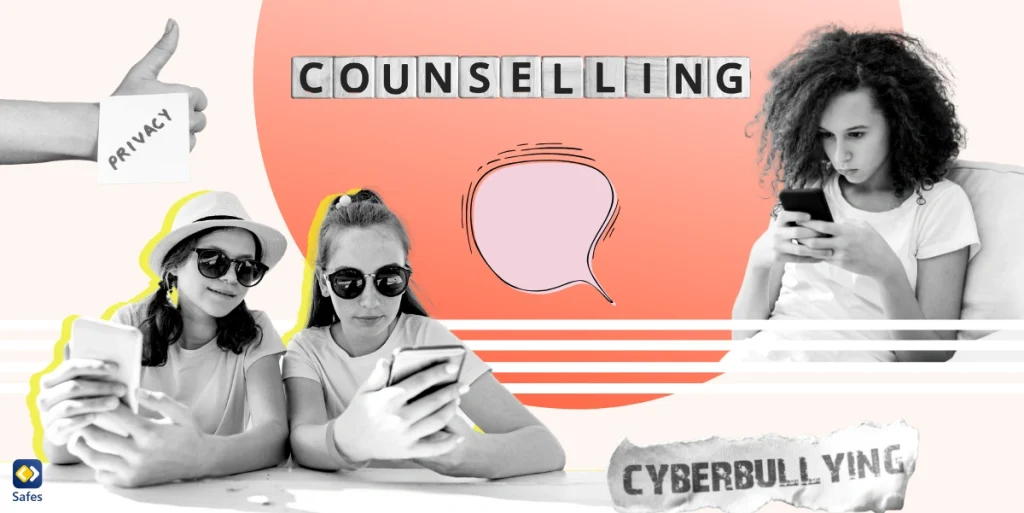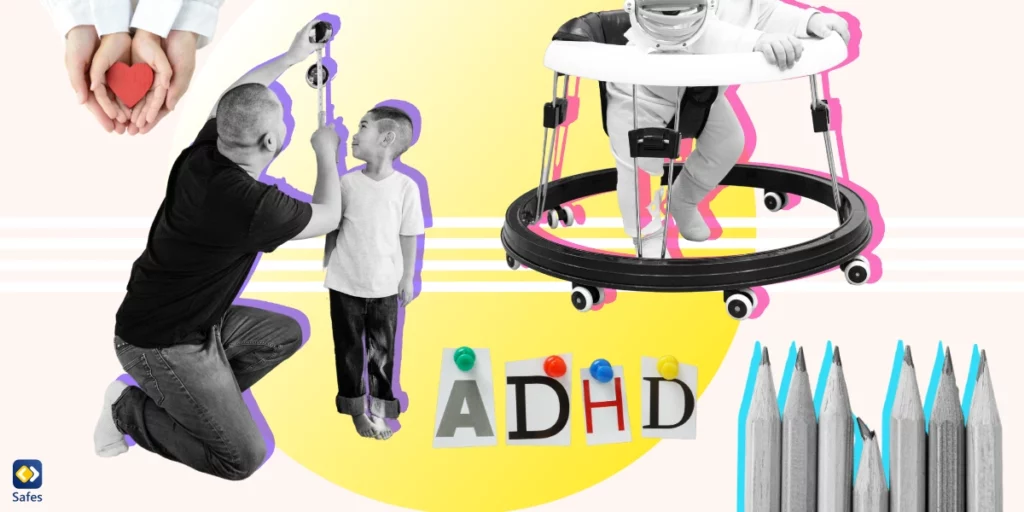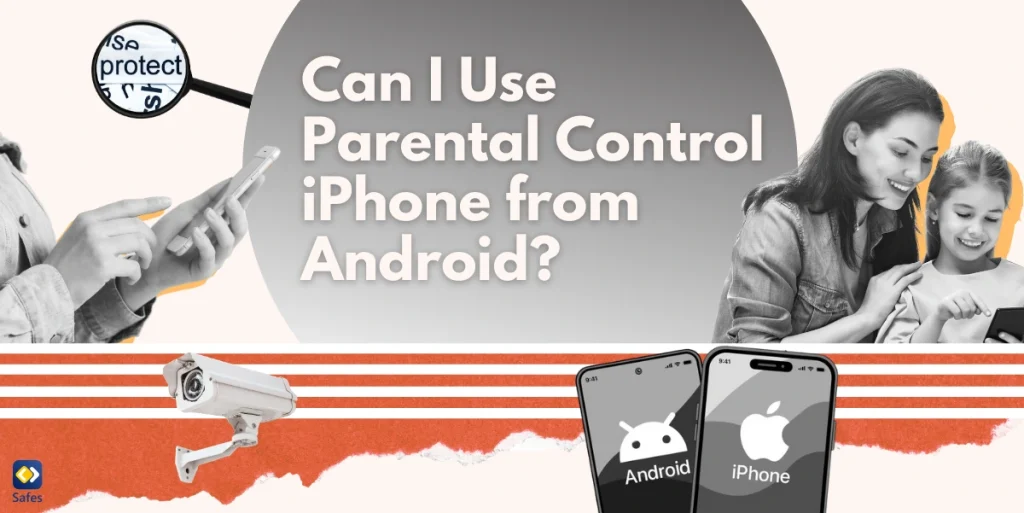The world children live in today differs from when we were young. Back then, the internet and digital world were much more limited. Hence, it’s no surprise that teens are facing unique challenges. Cyberbullying, online privacy threats, and other digital concerns are becoming more prevalent, making the need for effective solutions more urgent than ever. One such solution that is gaining momentum is peer counseling. Offering a unique approach to addressing these digital issues, peer counseling empowers teens to support each other and navigate the complexities of life, both online and offline, together. Let’s delve into this innovative approach and explore how it is transforming the way we address concerns among teenagers.
Download and Start Your Free Trial of the Safes Parental Control App
Digital Concerns: More Than Just a Trend
Today’s teenagers are faced with a host of new challenges. Being constantly connected to the internet, teens are exposed to many threats, including cyberbullying, exposure to inappropriate content, and invasion of privacy.
A study by the Pew Research Center revealed that 59% of U.S. teens have personally experienced at least one of six types of abusive online behaviors. Such experiences can lead to psychological distress, lowered self-esteem, and depression. In the face of these digital concerns, there is an urgent need for practical support systems to help teens deal with the intricacies of the cyber world.
Emotional Impact of Digital Concerns
Beyond the immediately observable effects, digital concerns can profoundly impact teenagers emotionally and psychologically. Cyberbullying, for instance, can lead to feelings of isolation, depression, and anxiety. Privacy breaches, on the other hand, can lead to a sense of vulnerability and mistrust. These emotional impacts must be recognized and addressed appropriately to ensure the well-being of teenagers.
Peer Counseling: An Overview
What is peer counseling? Peer counseling is a unique approach to support and guidance that involves peers helping each other. In digital concerns, peer counseling involves teens supporting each other in navigating their digital issues, handling cyberbullying, protecting their online privacy, and dealing with similar matters. The premise is simple: who better understands the challenges faced by teens in the digital world than their peers who are navigating the same terrain?
How Does Peer Counseling Work?
In a typical peer counseling setup, a group of students undergo peer counseling training, equipping them with the necessary skills to support their peers. The skills they learn should include active listening, problem-solving, and empathy. After being trained, the peer counselors are then available to assist their peers who may be facing digital concerns or other issues.
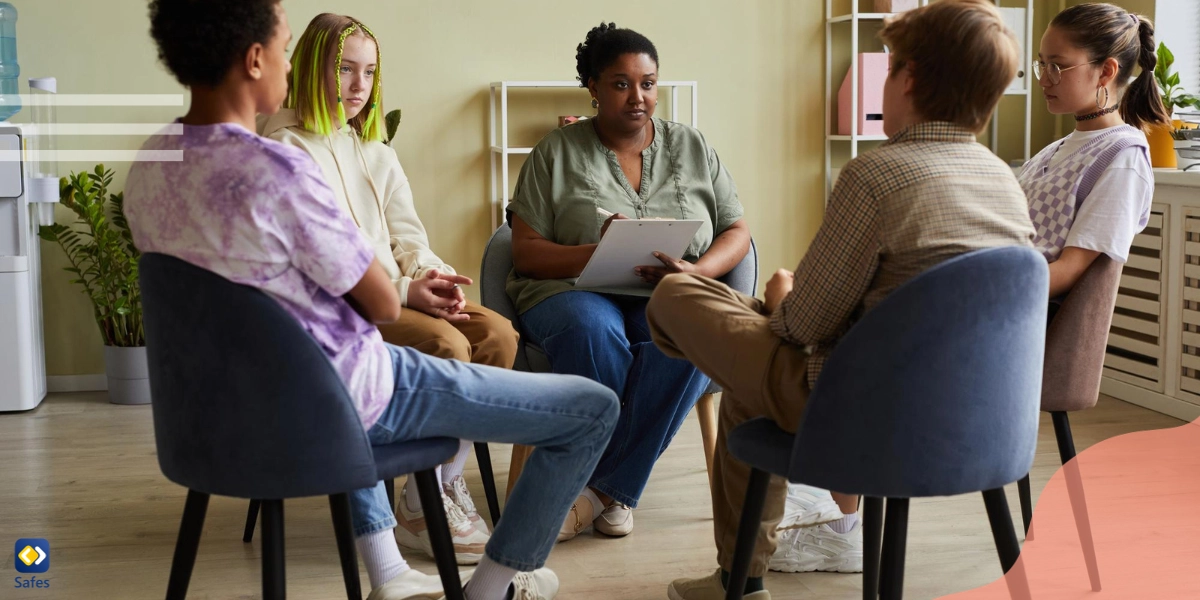
The Power of Peer Counseling
As explained earlier, peer counseling is an innovative method for teenagers to help solve each other’s issues in life, school, and on the internet. Now, let’s take a deeper look at the benefits of peer counseling over other methods.
Conflict Resolution
One of the most significant benefits of peer counseling is its effectiveness in conflict resolution. Teenagers often feel more comfortable discussing their issues with their peers than adults. Being comfortable can lead to more open and honest discussions, paving the way for effective conflict resolution. Having faced similar issues, peer counselors can provide practical solutions based on their personal experiences.
Learning from Experience
Peer counseling is grounded in the principle that experience is the best teacher. Peer counselors, having been through similar situations, can provide valuable insights based on their experiences. This shared experience creates a sense of relatability, making the advice from peer counselors more impactful and relevant.
Increased Support
Peer counseling provides an additional layer of support for teenagers. In many cases, teenagers may hesitate to approach adults with their digital concerns, fearing judgment or misunderstanding. Peer counseling offers a non-judgmental space where teens can openly discuss their concerns and seek help.
Updated Solutions
As lifestyles evolve, so do the challenges in life. Peer counselors in the same age bracket are more likely to be up-to-date with the latest digital trends, threats, and lifestyles. Being from the same generation allows them to provide relevant and updated solutions to the issues faced by their peers.
Safe Space
Peer counselors are trained to create a safe and accepting environment where teenagers can freely express their concerns. They are taught to listen empathetically and respond without judgment, building a sense of trust and openness. It’s crucial to have this safe space to encourage teens to seek help when they need it.
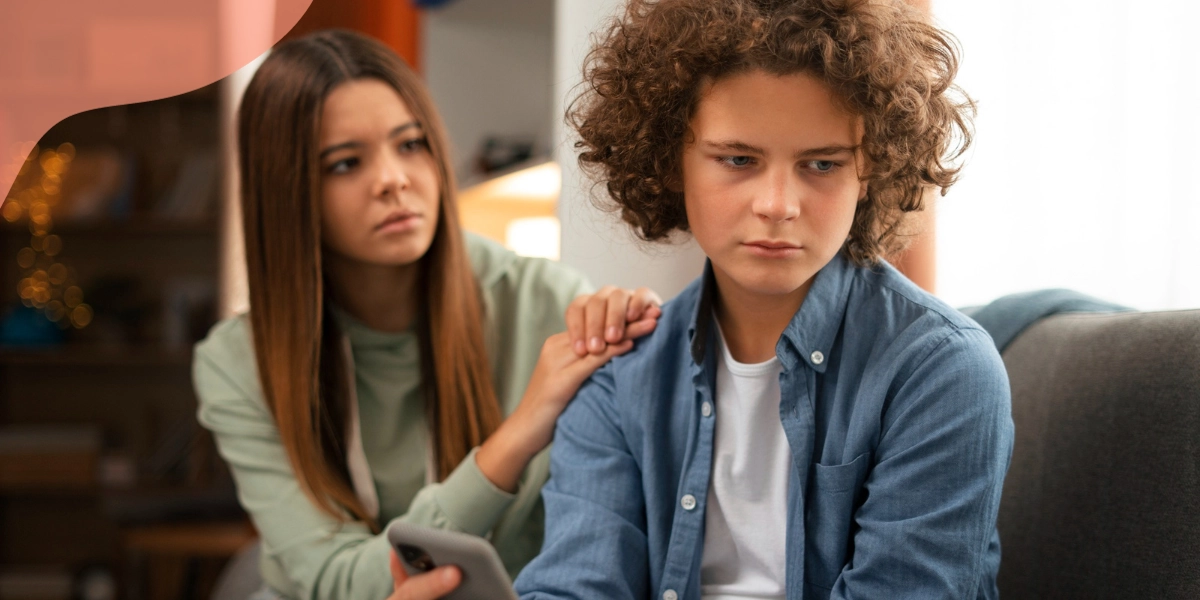
Implementing Peer Counseling: Best Practices
While the benefits of peer counseling are clear, its success largely depends on how it’s implemented. Here are some best practices for implementing peer counseling effectively in high schools or in your community:
Create a Collaborative Learning Environment
If you are a teacher, try to support peer counseling in your class. Creating a welcoming and accepting learning environment is crucial. Such an environment encourages students to feel comfortable sharing their experiences, asking questions, and giving feedback. Activities such as group projects and discussion boards can nurture this collaborative environment.
Encourage Active Participation
Develop assignments and activities that encourage students to actively participate in problem-solving and decision-making. Inspire your students to volunteer for peer counseling. Student peer counseling not only enhances their learning experience but also builds a sense of responsibility and leadership.
Provide Clear Guidelines and Expectations
Clearly communicate the guidelines for respectful communication and knowledge sharing. Also, set specific expectations for student engagement and teamwork to create an effective learning environment.
Use Technology to Facilitate Collaboration
Leverage digital tools like chat rooms, forums, and project management software to facilitate collaboration among students. These tools can make the peer counseling process more efficient and accessible.

Success Stories: Peer Counseling in Action
Several schools and organizations have successfully implemented peer counseling programs, yielding positive outcomes. For instance, ever since the COVID pandemic, peer counseling has become more prevalent in high schools in California, delivering positive results. Clovis West High School at Fresno is another successful peer counseling example that has had a peer counseling program since the 1980s.
Also, many non-profit organizations offer peer counseling programs that help teenagers deal with substance abuse, depression, and family problems. An excellent example of such an organization is Teen Lifeline, based in Maricopa, AZ, which also offers counseling services globally via the internet and phone.
The Role of Digital Tools in Peer Counseling
Digital platforms play a crucial role in facilitating peer counseling. They enable students to connect, collaborate, and learn from each other. However, we must help them to choose safe and reliable platforms to protect their privacy and security.
Cyber threats at school and home are undeniable. Without proper education or tools to protect your child, they’re exposed to a variety of harmful byproducts of the online world, including inappropriate content, screen addiction, and cyberbullying.
Empowering Teens Through Safes
A tool that can give you peace of mind that your child is safe online is the Safes parental control app. The Safes app can block harmful apps, websites, and search keywords. Using it, you can also monitor your child’s activity on various social media such as Instagram, Facebook, WhatsApp, and YouTube. With these advanced monitoring features, you’ll be notified if your child has been exposed to harmful content or is receiving inappropriate messages. With hindsight, you can protect your child from different types of cyber harassment. And these are only part of the features that Safes offers.
Download Safes from our website or Google Play and App Store, and learn how to put parental controls on a variety of platforms using these resources:
- Windows parental controls
- Macbook parental controls
- Parental controls on Android
- iPhone parental controls
Discover the full potential of Safes by signing up for a free trial. Start protecting your child’s online experience today.
Protecting Students with Safes School
If you’re a schoolteacher or administrator, you might be interested in trying Safes School to protect and manage your students while they’re at school. Safes School offers exclusive features to keep track of students’ attendance and the apps and websites they have access to. It’s mandatory for schools to use content filtering to meet the Children’s Internet Protection Act (CIPA) requirements. Therefore, using Safes School, you can both make sure you comply with CIPA and keep your students away from harmful content at the same time.
If you’re interested in trying Safes School at your educational center, make sure to contact us for a free trial.
Conclusion: Let Your Child Benefit from Peer Counseling
The power of peer counseling lies in harnessing teenagers’ collective wisdom and experiences. If you equip them with the right tools and training, you can empower them to support each other in the modern era’s complexities of life and school. Let’s leverage the power of peer counseling to create a safer and more supportive environment for teenagers.
Your Child’s Online Safety Starts Here
Every parent today needs a solution to manage screen time and keep their child safe online.
Without the right tools, digital risks and excessive screen time can impact children's well-being. Safes helps parents set healthy boundaries, monitor activity, and protect kids from online dangers—all with an easy-to-use app.
Take control of your child’s digital world. Learn more about Safes or download the app to start your free trial today!
